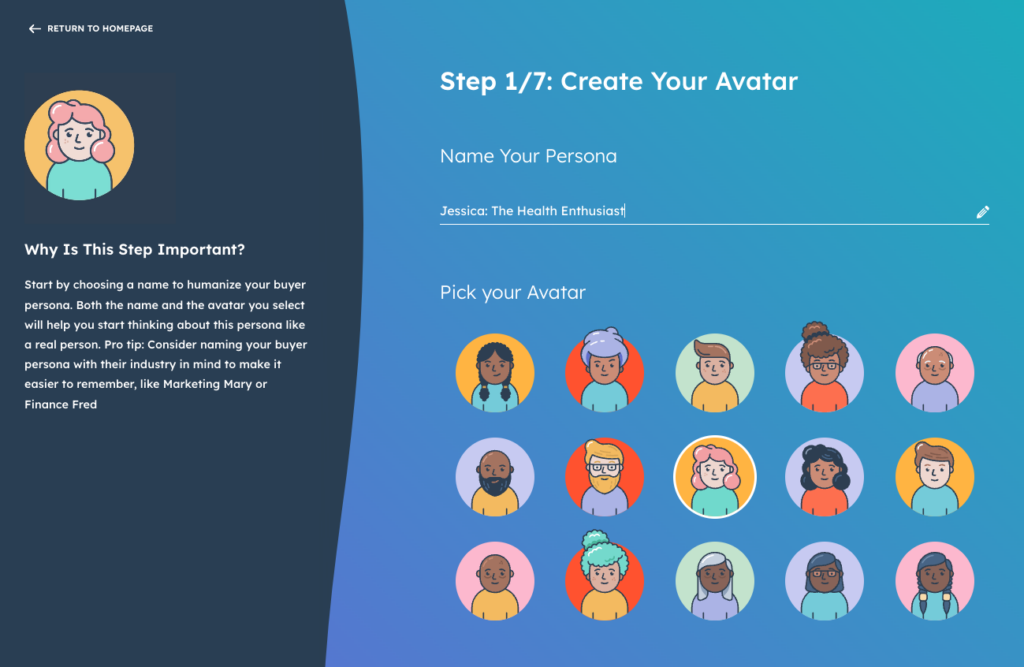5 Steps to Marketing Your Small Business Effectively
As a small business owner, you’re constantly looking for ways to increase your sales and grow your business. You want to market effectively, but maybe you don’t know the right way (or the best way) to do it.
Maybe you’ve already tried a few marketing channels but didn’t see the results you were hoping for. This time, you don’t want to waste your money.
We get it—there’s nothing worse than time and money wasted. We’re here to make sure you feel confident as you dive into your marketing journey.
Follow these Five Steps to Market Your Small Business Effectively
You could offer the highest quality product or service on the market, but if you don’t market your offering properly, you’ll find it hard to reach your target audience. The following 5 steps will steer you in the proper direction and help you get your business in front of the right eyes.
1. Define Your Target Audience
You’ve probably heard Abraham Lincoln’s famous quote, “Give me six hours to chop down a tree, and I’ll spend the first four sharpening the axe.” We’re not saying Lincoln was a marketing genius, but…his advice is extremely relevant.
Marketing is hard. And marketing without knowing who you’re marketing to is like trying to aim in the dark. Understanding who your ideal customer is will help you build conversion-driven campaigns. To speak directly to the people who are most likely to purchase from you, you need a clear understanding of:
- Their pain points.
- The things that motivate them to take action.
- The places they spend the most time.
- The kind of language they use when they search for businesses like yours online.
So, how do you define your target audience?
If you run a well-established business, the easiest way to start is to examine your most loyal customers— the people who purchase from you again and again. Consider chatting with them in person or reaching out with a quick text survey. Ask questions like:
- What do you like the most about our products/services?
- What aspects of our business bring you back again and again?
- What led you to make your first purchase with us?
- In your opinion, what sets us apart from our competitors and other local businesses?
Just be sure not to bombard them with too many questions at once. (Hint: Check out these tips for successfully running customer surveys.)
Don’t have a pool of loyal local customers to poll? There’s no harm in starting from scratch. Ask yourself, “Who’s the most likely to purchase from us?”
If you run a health and fitness store, the obvious starting point is people who are passionate about living a healthy lifestyle. But that’s still a little too vague. Your target audience is not one-dimensional. Different people have different interests, pain points, and challenges, and come from different backgrounds. Some are likely to purchase from you daily. Some may purchase from you rarely.
You need to categorize your target audience into different personas. Some examples might include:
- The Health Enthusiast: This person is highly motivated to maintain a healthy lifestyle and is constantly trying new workout routines, diets, and supplements to enhance their fitness journey.
- The Busy Professional: This person has a demanding job and limited free time, but still wants to maintain a healthy lifestyle. They are interested in quick and convenient solutions such as pre-packaged meals, at-home workouts, and on-the-go snacks.
- The Budget-Conscious Fitness Fanatic: This person is passionate about fitness and is looking for affordable options. They are interested in discounts, sales, and finding ways to make the most of their budget.
- The Newbie: This person is just starting their fitness journey and is looking for guidance and support. They may be interested in beginner-friendly workout routines, introductory guides to nutrition, and supportive community resources.
Once you’ve compiled some initial information, you can dig deeper and outline demographics, psychographics, goals, pain points, and channel preferences.

→Need a helping hand? Try HubSpot’s Make My Persona Tool.
2. Develop Your Unique Value Proposition
Once you’ve defined your target audience and built out buyer personas, the next step is to get clear on your unique value proposition. Your first instinct might be to say that your value proposition is something like:
- We’re reliable.
- We’re trustworthy.
- We offer high-quality products or services.
While all of the above may be true, you need to get more granular than that. Why should your audience purchase from you instead of a competitor? There are plenty of reliable businesses out there—what’s something unique that only your business brings to the table?
For example, if you run a local restaurant that sources ingredients from local farms and markets, your value proposition might be something like: Support local. Eat local. Enjoy a meal made from the freshest ingredients straight from local farms and markets with a side of great service from your local foodie friends.
The value proposition above is unique and memorable, and it differentiates the restaurant from other options in the area.
Once you have developed your unique value proposition, integrate it into all aspects of your marketing efforts—every social media post, ad campaign, and customer interaction should directly tie back to it.
3. Create Goals and Make Them Actionable
Marketing without a plan is like driving a car with a blindfold on—yikes. And a marketing plan without actionable goals? Double yikes. Outlining goals and breaking those goals down into actionable steps is the way to get results.
Let’s say you have a goal to increase marketing-driven sales by 15% within the next two months. That’s a great goal, but you need to identify some smaller goals that will help get you there. For example:
- Increase social media engagement by 25%.
- Increase website traffic by 20%.
- Generate 50 leads per month.
Next, break down your small goals into actionable steps. For example, if you have a goal to increase social media engagement by 25%, the following steps will help you achieve that:
- Create and share engaging content.
- Engage with followers.
- Run social media contests and promotions.
- Utilize hashtags and location tags.
Remember, Rome wasn’t built in a day and your business won’t be either. It’s great to be ambitious as long as you ensure your goals are achievable. Don’t be afraid to start small and scale as you gain confidence and experience.
4. Utilize a Mix of Marketing Channels
Alright, now it’s time to think about which channels will help you achieve your desired results.
Selling to modern customers is hard. So many businesses are competing for their attention.
And even once you get someone’s attention for the first time, there’s still a lot of work to be done. In marketing, people often talk about the Rule of Seven, which states that a potential buyer needs to see a product or service at least seven times before they make a purchase. While this isn’t a hard and fast rule, it’s true that people probably won’t purchase from you the first time they find you.
A multi-channel marketing approach will help you put in front of your potential customers repeatedly, and over time you’ll build trust and increase the likelihood that they’ll purchase from you (just make sure your messaging across channels is consistent).
So, how do you know which channels to show up on? First, think about your buyer personas. Where does your target audience spend the most time—both in person and in the digital world? You probably don’t want to advertise on TikTok if you’re primarily targeting people who are over the age of 50.
Next, consider your budget and resources. If you have a small budget, you probably don’t want to jump right into paid Google ads. Instead, you might try organic social media.
5. Measure & Analyze Your Results
When it comes to marketing, the results are never 100% guaranteed. Strategies that work well for others may not necessarily deliver the same results for you. It’s important to monitor your marketing analytics closely, especially in the beginning.
There’s no point in investing in a channel or strategy that isn’t delivering results.
To track website performance, user behavior, and all-things-website, use Google Analytics. To dive deeper into the behavior of website visitors or users, use a behavior analytics tool like Hotjar. To track the performance of your social media marketing efforts, try Hootsuite or Buffer.
Once you’ve figured out which channels and tactics are working best for you, you can reallocate budget accordingly.
And remember, measuring and tracking results and metrics is not just a one-off thing. While you may want to monitor things more closely as you’re just getting started, you should make a long-term habit of measuring results and making data-informed decisions.
Ready, Set, Grow
People these days have short attention spans and a plethora of enticing options. Randomly implementing a few marketing tactics will do more harm than good. Without conducting thorough target audience research, developing your unique selling proposition, and coming up with clear, achievable goals, you’ll find it hard to get the right eyes on your business.
If you need a bit of help, check out our small business marketing plan template, where we’ll walk you through how to define your ideal buyers, get clear on messaging, identify local marketing channels, and measure your success.
Get started today
Ready to grow? Scale your business with an AI-powered lead conversion platform.








